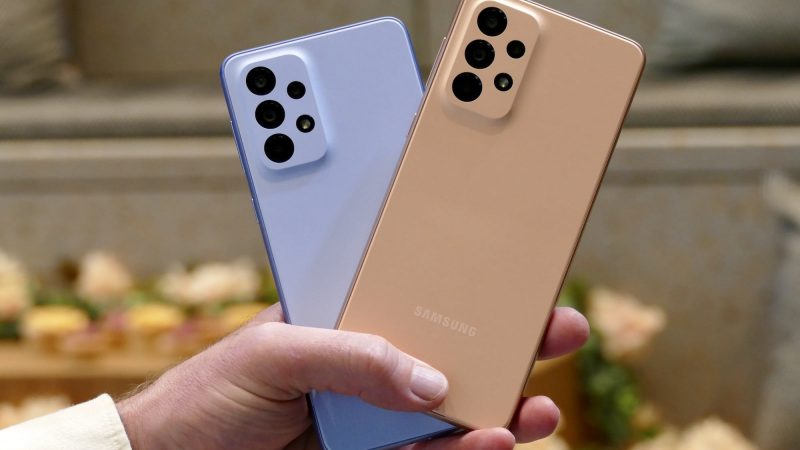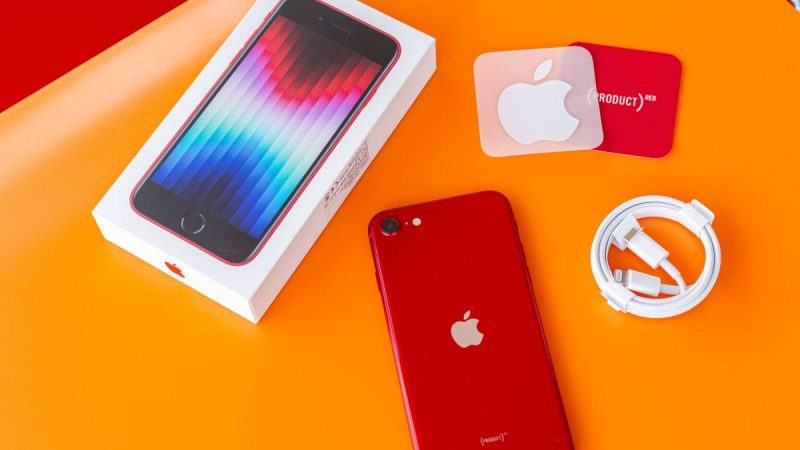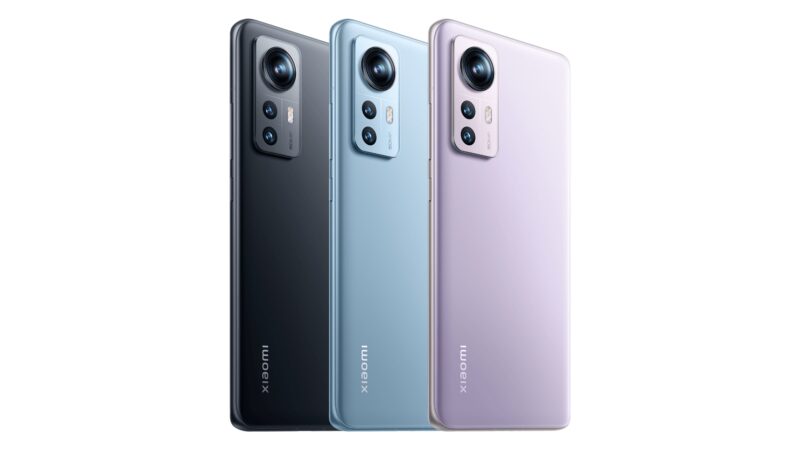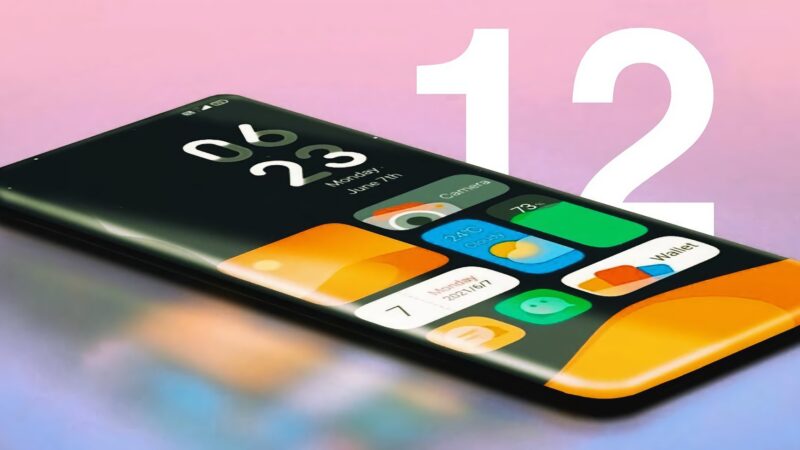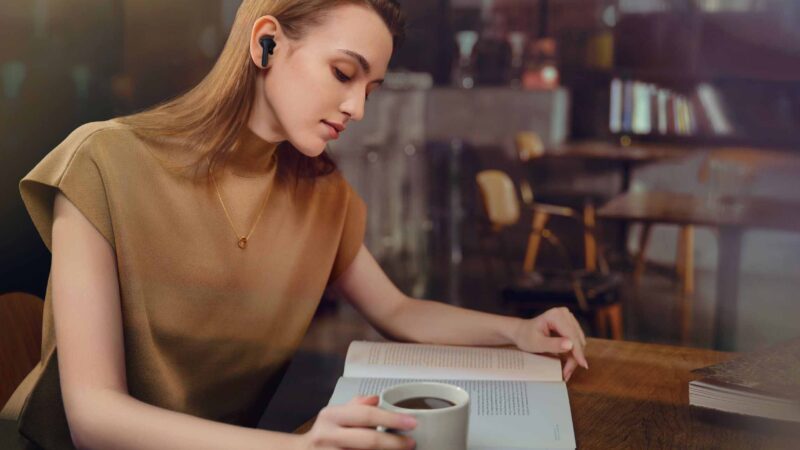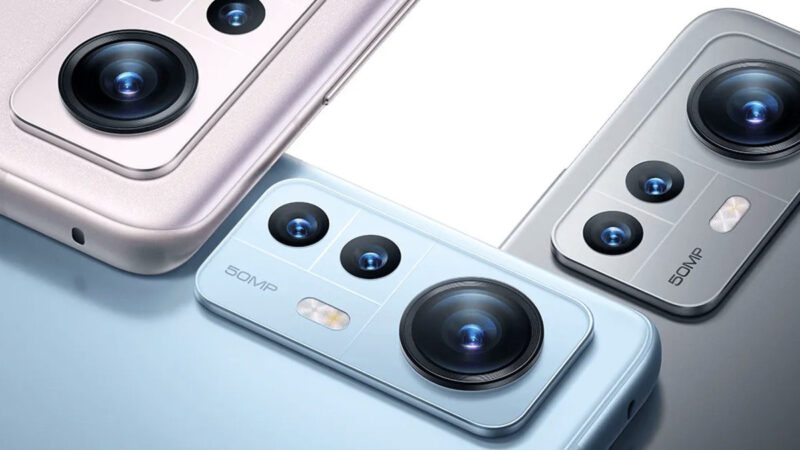Huawei P50 Pocket Detailed Review Part-II
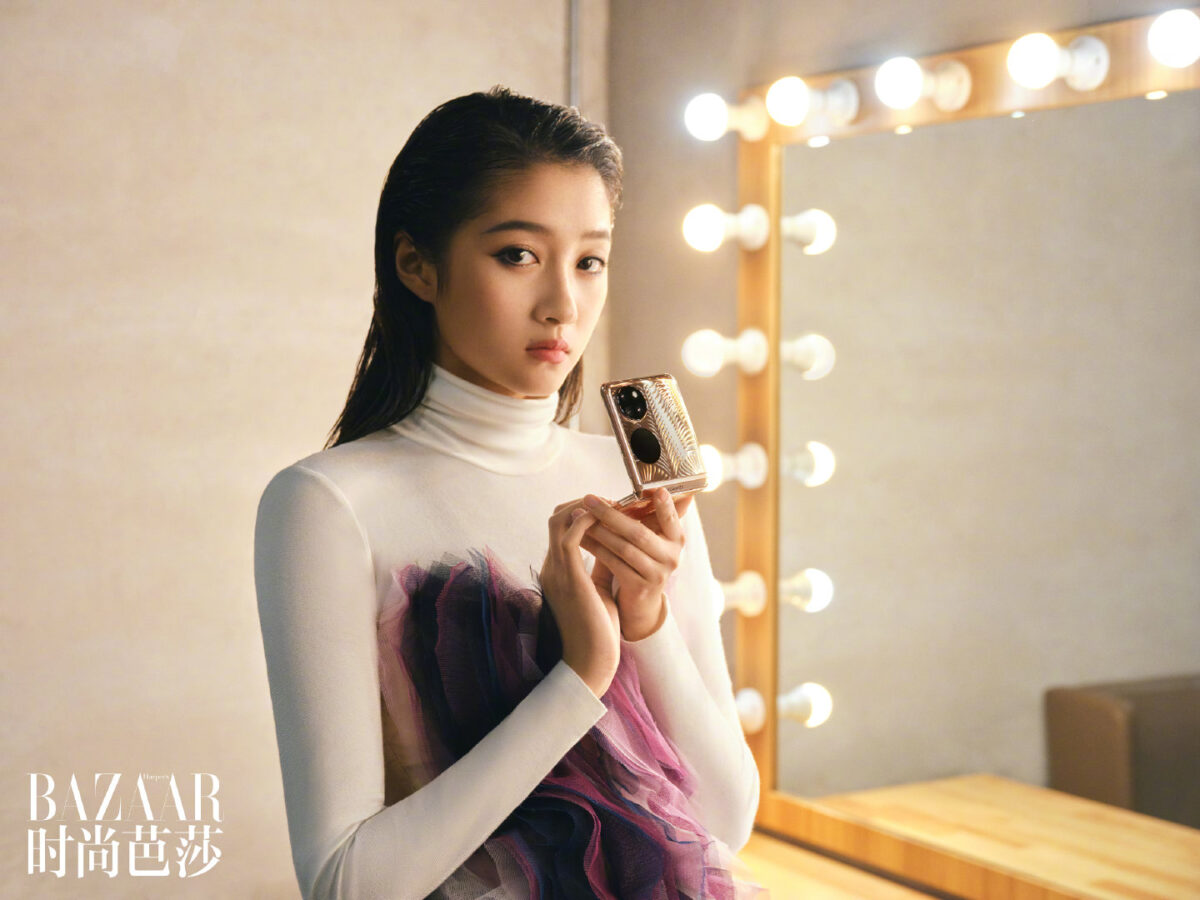
Huawei P50 Pocket Review: Android 11 core with EMUI 12:
In Europe, the P50 family, including the pocket, operates on EMUI 12 and in China, Harmony OS 2.0. The difference could be confined to pre-installed programs and utilities, but we don’t know. However, here is how our European EMUI 12 version looks. Huawei P50 Pocket Detailed Review Part-I.
EMUI 12 acknowledges that it is based on Android 11, but it lacks Google Services and the associated Google applications suite. Instead, Huawei’s Petal Search and Petal Maps, Huawei’s services as part of HMS Core, and the App Gallery app store are used in the EMUI 12.
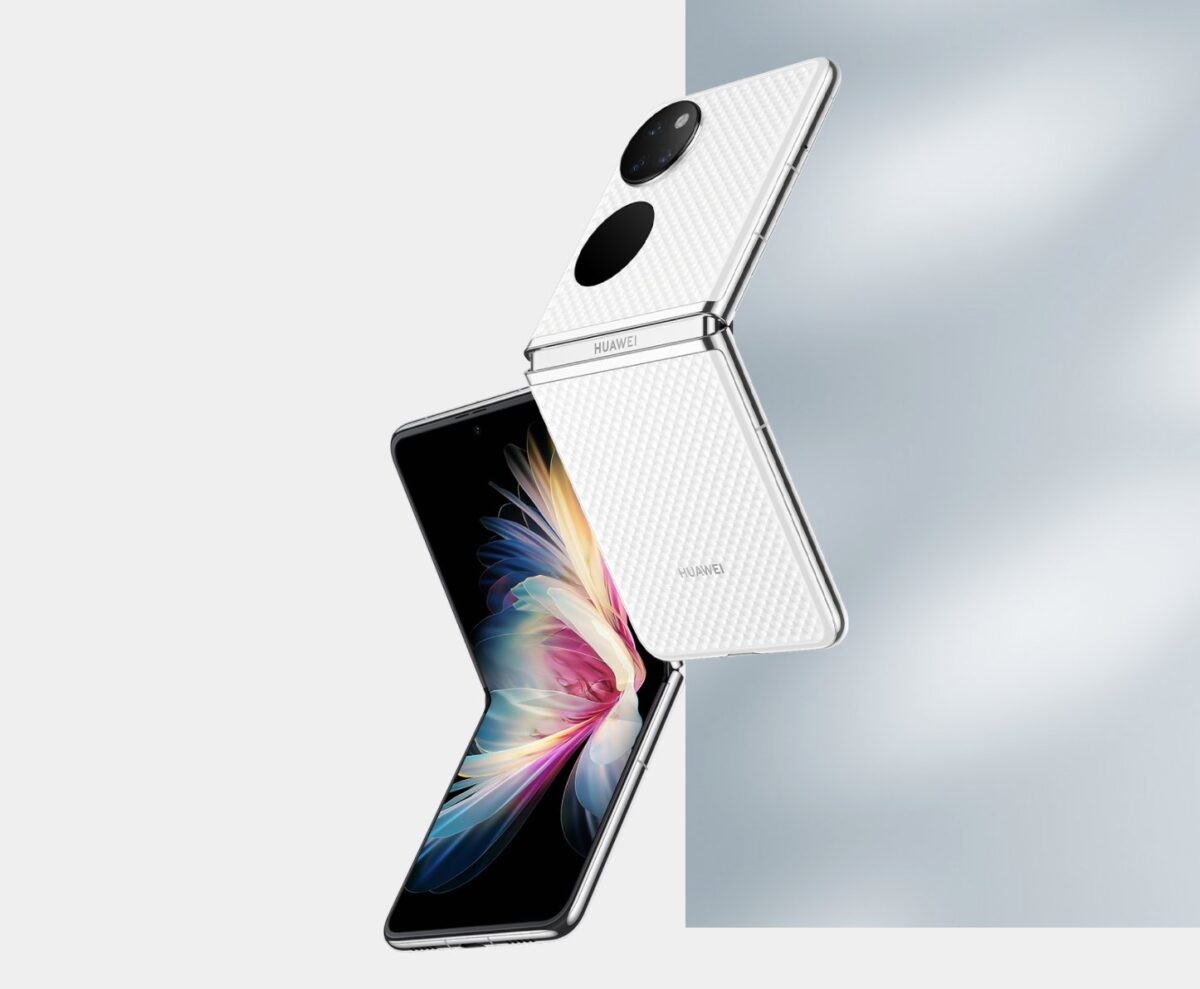
But, before we get into the features shared by all EMUI 12 devices, let’s look at what makes the pocket unique. For starters, it offers a Super Privacy mode that, when enabled, limits access to the camera, microphone, and location services.
It can be turned on and off as needed or only when the phone is folded closed. The P50 Pro doesn’t have it because the always-on toggle can be applied on non-foldable just as well.
There are a variety of themes available for the external display, and you can set things up such that the external display and the primary display both have the same theme or set them apart.
Always-on display Feature:
The always-on display feature is available from the same menu as on the P50 Pro, with the added benefit of using it on another monitor. You can pick from various clock skins, some of which have many sub-variants. Then you can choose between always-on, scheduled, or tap to see the behaviour. You can also download more AOD themes if you don’t like pre-installed ones.
By swiping to the right, the external display and the AoD will show you widgets based on background activities you have going on. These include Huawei Health’s workout progress, music playback, and voice recording items. It will also display notifications as they arrive, with the option to cycle through them by swiping down.
Permanent’ widgets by swiping to the left:
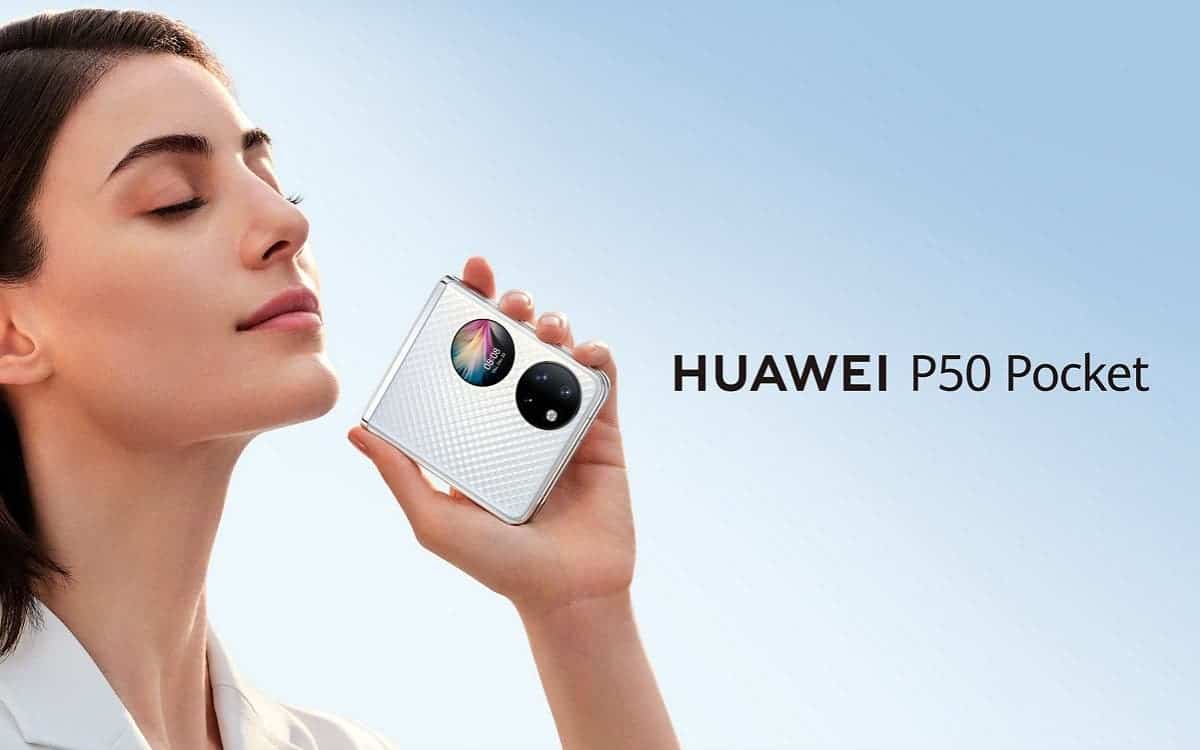
You can access ‘permanent’ widgets by swiping to the left. These can be modified in settings, and you have five options to select from, at least on our pocket EMUI 12 edition. Things like the camera, weather, calendar, today’s schedule and the most intriguing one were inexplicably not activated by default.
The dedicated UV light emitter and the 32MP third camera on the back are used in the Sunscreen test, part of the Mirror app (which is not used for anything else). The arrangement allows you to assess if you’ve applied your sunscreen appropriately and thoroughly thanks to some magic (or, rather, science).
We can see it beneficial for people who use the product regularly as part of a basic skincare routine or due to a medical condition. Still, beachgoers and mountain climbers can also benefit from it. However, you should avoid touching the pocket with your greasy sunscreen-covered paws.
Split Screen:
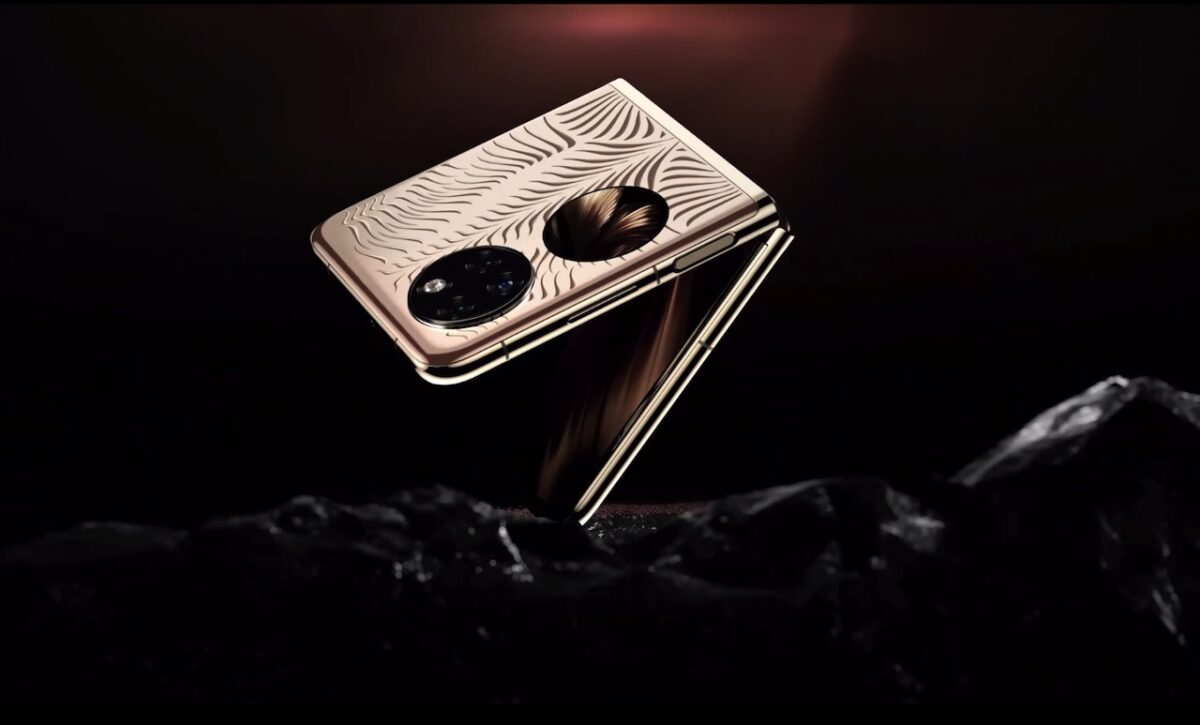
We also discovered a split-screen camera viewfinder that activates when the phone is half-folded. Still, its usability is a little iffy in this condition because it isn’t entirely reliable. We didn’t find any other apps that behaved in the same way.
Aside from those minor differences, EMUI 12 on the Pocket is nearly identical to EMUI 12 on the Pro and preceding incarnations. You can set up a magazine lock screen design, which changes the wallpaper every time you wake up the screen, much like on all EMUI-powered smartphones. Quick shortcuts to various often used utilities can be accessed by sliding from the bottom.
As noted in the design section, the P50 pocket has a side-mounted fingerprint sensor, and we have no issues regarding its usability. Both fingerprint and face unlocking are available, although fingerprint unlocking is more secure because Face unlock is solely on the camera, with no 3D mapping.
All installed and system apps are available on the home screen; however, you can swap between this default arrangement and the home screen plus the app drawer option in the settings menu.
Large Folders:
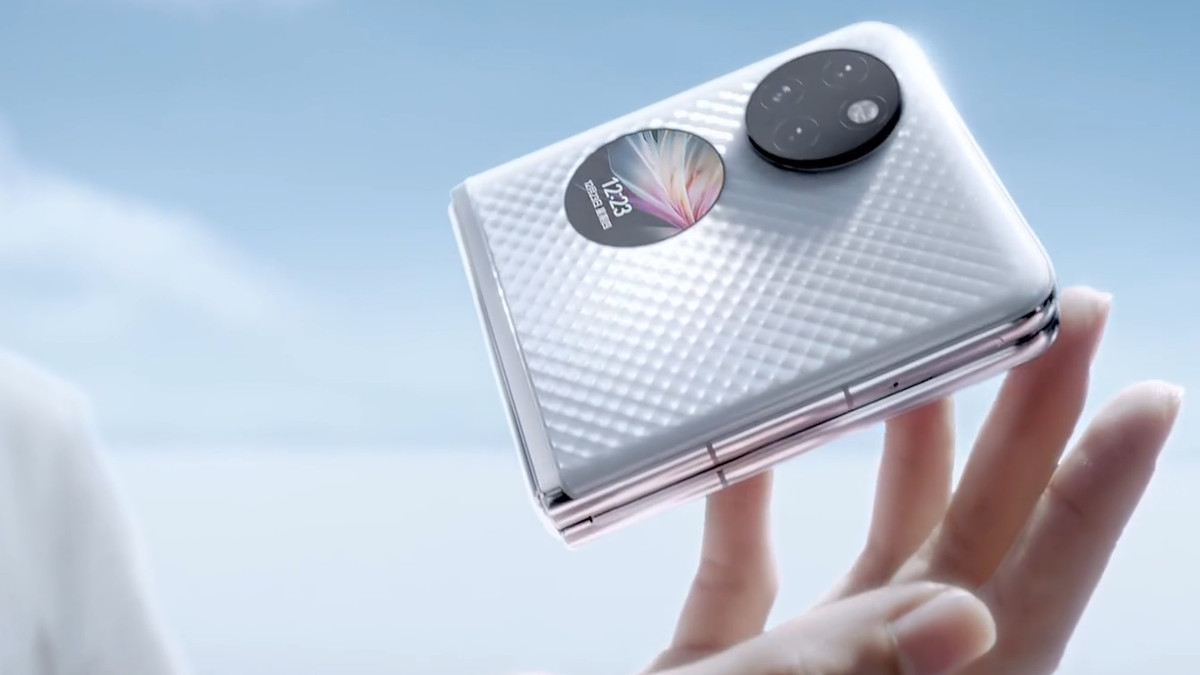
Large folders are supported in EMUI 12, each taking up four spaces and holding up to nine apps. You don’t need to expand the folder; simply tap on its icon. Simple, yet ingenious.
If activated, Assistant Today appears on the leftmost home screen page, which serves as an infotainment hub. It has a personalized newsfeed, weather forecasts, smart app suggestions, health information, battery information, AppGallery suggestions, etc. You can personalize this page with a variety of information services provided by Huawei partners and game information, scores, and other information. We acknowledge that this page appears cluttered with advertisements at first glance, but you can truly make it your own by filling it with exciting content.
Apple’s Notification Center and Control Center:
Apple’s Notification Center and Control Center are two different panes you swipe down from the top to access. The Control Center is dragged to the right, while the notifications are carried to the left.
Meanwhile, swiping down anywhere on the home screen, just like iOS, leads you to the system-wide Search page.
Speech Assistant Celia:
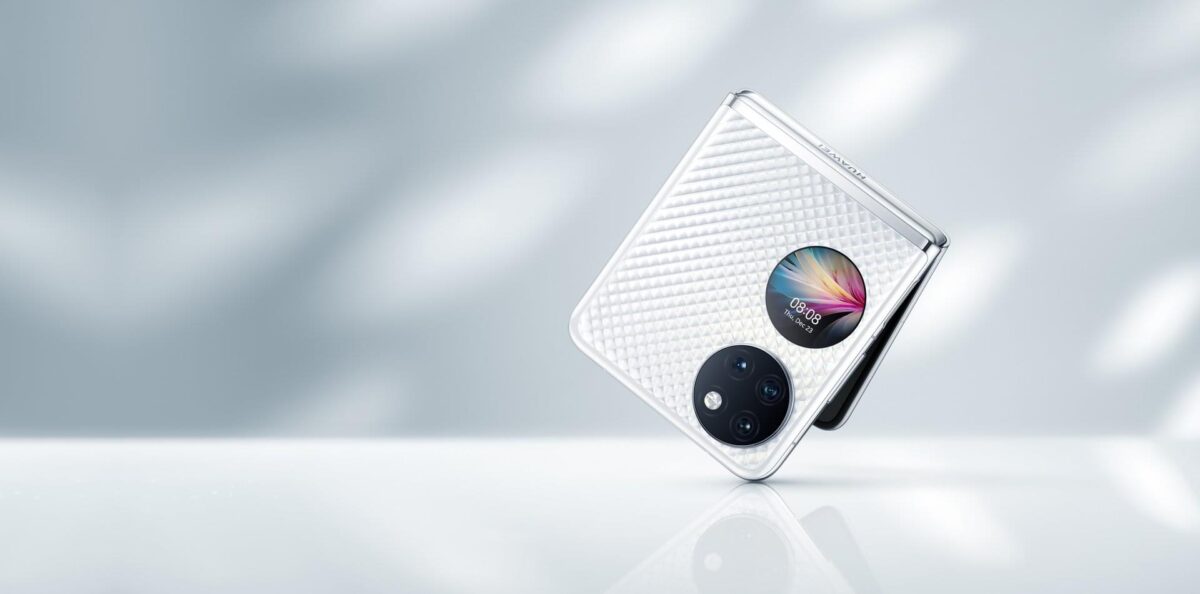
Huawei’s speech assistant Celia (also known as AI Voice) is now available on the pocket while absent from the P50 Pro. It can do phone commands, schedule alarms and meetings, and check things up on the internet for you. Other Huawei Assistant features such as AI Lens, Touch, Tips, Search, and Today are also available (those can be found on the Pro).
On the pocket, multitasking is quite advanced. You may use the task switcher to put an app in pop-up mode, from which you can drag and move it to enable split-screen mode. To bring up the Multi-Window Dock, you may also pull from either side of the screen and hold.
Swipe up for Home, swipe up and stop midway for Task switcher, or swipe from the left or right side of the screen for Back in EMUI 12. Of course, you can use the traditional virtual buttons.
Pre-Installed Apps:
Huawei includes several pre-installed apps to help you get started. Huawei has apps for Gallery, Music, Video, and Health. A file manager is also offered.
Petal Maps, Petal Search, and Huawei Browser are also included.
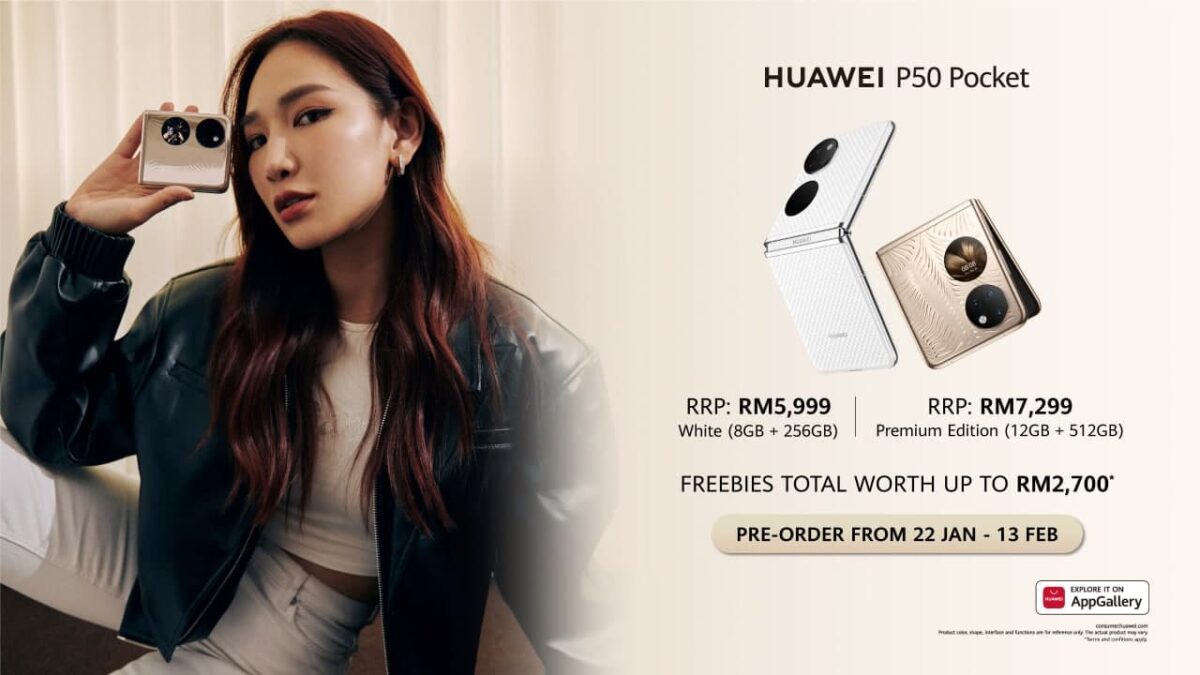
Sound Booster is an unusual feature with an ambiguous name. It converts your phone into a music player that sends sound to Bluetooth headphones or speakers (meaning you have to be in Bluetooth range). This may be useful for babysitting and spying on your in-laws in the next room.
Device+ is a new EMUI 12 that intends to boost Huawei’s ecosystem further. It displays adjacent Huawei devices, such as MediaPad tablets, MediaBook laptops, Vision TVs, and Freebuds, enabling much easier interaction between them, similar to Apple’s AirPlay. Device+ provides a centralized control panel for managing all connections and sending audio and photos to any connected Huawei devices.
Huawei’s AppGallery handles the default app installations. It includes a Petal search feature and displays results from other app repositories such as APK Pure and APK Monk. It can also download and install the app from there, eliminating the need to download and install its dedicated apps.
Feature of Additional Apps:
Of course, you may install additional app stores like APKPure and Aptoide and Amazon’s Appstore. You may download Facebook and Google Chrome (no sync) and a variety of other gaming and workplace software this way. Any APK file can be installed, but those relying on Google Play Services will not work.
Benchmarks that are created artificially:
The SD888 is a well-known device, and the lack of next-gen connection in this version does not affect the CPU and GPU configuration. The Huawei P50 Pocket has a Snapdragon 888 processor, but it’s not your usual SD888: it lacks 5G functionality (or is disabled) due to Huawei’s ban on using US IP in the 5G area. The pocket comes with 8GB of RAM and 256GB of internal storage (our interpretation) or 12GB of RAM and 512GB of internal storage.
Camera Review of the Huawei P50 Pocket
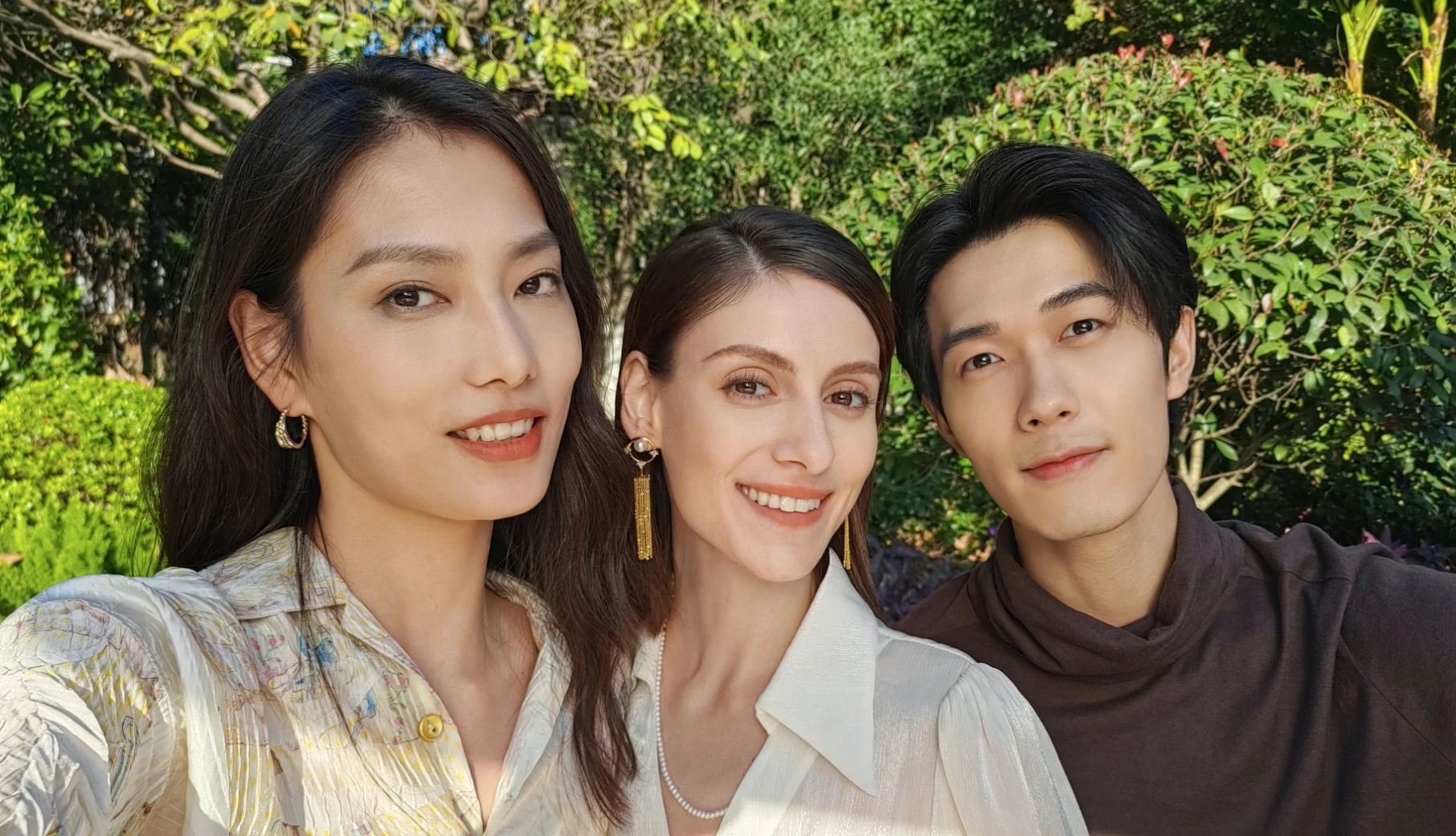
Because the Snapdragon is such a well-known chipset, we knew what to anticipate from the P50 pocket, and we got it. The bag performed similarly to the Pro in GeekBench, with the two P50s roughly in line with the rest of the high-end competition in the single-core test. However, when it came to multi-threaded load, the two Huawei’s were near the bottom of the list.
There are two plus one cameras on the rear, while on the inside, there are 10.7MP selfie cameras.
We may argue that the P50 pocket has a traditional camera system with a Quad Bayer central unit and a standard ultrawide. Furthermore, it uses a 32MP camera for its primary party trick function, the Sunscreen Test, which we didn’t find to be used for anything else. However, it comes with a built-in UV light that allows for a couple more party tricks, including the primary camera. Fans of the German optical glass company will be disappointed that there are no Leica labels on this phone. We’re guessing that the two companies’ collaboration is limited to the P50 Pro.
Huawei’s specs pages are sparse, and they don’t specify anything other than the f/1.8 Aperture. Still, it should be a 1/1.7″ imager with a 27mm equivalent focal length based on prior Huawei implementations. The primary camera employs a Quad Bayer type sensor with a nominal resolution of 40MP and a default resolution of 10MP. There’s also laser autopilot on board.
Ultrawide Camera:
According to the manufacturer, an ultrawide camera is a 13MP unit with an f/2.2 aperture and a 120-degree field of view. It also includes autofocus, which is an improvement over the fixed-focus Z Flip3 ultrawide.
The specialized sunscreen camera uses a 32MP Samsung Tetrapixel sensor, which is the only one that appears in hardware apps. The fact that it’s a 1/3.14 type unit with a 0.7m pixel size is presumably unimportant to the feature’s operation. This camera does have autofocus.
A 10.7MP front-facing camera with an f/2.2 aperture lens is included for selfies. Without looking at the photos, we’d classify it as a video-call-only device and recommend snapping selfies using the back cameras and framing them on the external display.
Compared to prior Huawei phones, the camera app hasn’t altered much. You can change modes by swiping left or right on the Mode selector at the bottom. You can also reorganize and add more options to this bar.
Zoom-in:
Zooming has been rectified, and the selector is now where it should be in portrait and landscape orientation: at the bottom in the picture and on the shutter release side in the landscape. Even though there is no actual zoom camera, it has four fixed steps: UW, 1x, 2x, and 5x.
Huawei’s AI:
Huawei’s AI is used to enhance the camera app once again. We tend to leave it off, even though modern implementations aren’t nearly as harsh as with phones in the past. There’s a new Master AI that recognizes and adjusts settings for various circumstances. You don’t have to go into settings to turn it off and on because there’s a toggle in the viewfinder.
There’s also a Pro mode where you may tweak the ISO (50 to 409,600 for the primary camera, 50 to 6400 for the ultrawide), shutter speed (1/4000s to 30s), exposure compensation (-4 to +4EV in 1/3 stop increments), and white balance on your own (presets and specific light temperature). You can also change the focus and metering modes (matrix, centre-weighted, and spot) (single, continuous, and manual). An icon will appear on the screen if the phone believes you have messed up the exposure. Pro mode is available on all back cameras, by the way.
There’s also a Pro mode for video, with a maximum ISO of 6,400. You can also choose your preferred shutter speed.
Huawei phones have offered both a Portrait and an Aperture mode for years. You can adjust the simulated Aperture in Aperture from f/0.95 and f/16. Within the Gallery, you can adjust the Aperture and focus point after taking the photo.
Image quality in Daylight:
The daytime images taken by the pocket’s primary camera are excellent. There’s a lot of detail – 10MP isn’t a lot, but it’s not drastically less than 12MP, and the phone renders the pixels it records sharply. Whether you’re looking in the shadows or areas of uniform colour like the sky, noise is negligible to non-existent.

The dynamic range is superb, with a well-judged falloff into the highlights and shadows, pleasingly high global contrast and good extreme development. Colours are vibrant without tasteless, and the white balance is consistently accurate.
The 40MP camera also performs at 2x zoom, making it an appealing alternative to a specialized short-range zoom module. Still, neither of these flaws is a deal-breaker, and we’d cheerfully accept this 2x output. An overly critical investigation will reveal some extra sharpening halos along contrasted edges and jaggies next to lines at a specific inclination.
The 5x zoom level is less appealing to us. It’s beyond the sensor’s capabilities, and whatever computational magic Huawei can concoct. And the most we can say about it is that it looks halfway nice when magnified to fit the screen.
Photos don’t appear to offer any improvements in terms of detail at the minimal resolution. That assertion is a little more nuanced given that the 40MP AI mode, which performs some picture stacking routines, may yield superior results. But, we don’t believe any of it is worthwhile in the end.
Picture Quality:
The ultrawide camera may not be eye-catching on paper, but it produces excellent pictures. Even if things aren’t pin-sharp, detail levels are good, especially for distant subjects. The ones that are close by, on the other hand, appear to be more distinct. Again, noise isn’t a part of the picture. Although there are some tiny colour discrepancies between the ultrawide and the primary camera on occasion, we have no complaints about the ultrawide’s colour representation. The dynamic range of this camera is outstanding.
Image quality in low-light situations:
In low-light situations, the pocket is also a good performer. Its primary camera takes clear, detailed photos, and noise is well controlled. The dynamic range is also superb, with decent shadow development and well-preserved highlights and no blooming around intense light sources. The white balance and colour rendition are also spot-on.
In our experience, turning on Night mode is more of a liability. It would frequently choose a ridiculously long capture period, such as 13s or 27s, leaving you with trim options: you could cancel the capture, but it would then proceed to execute whatever processing it had planned for the entire stack, which you couldn’t abort. Then, with no evident benefits, the results of more modest 2s or so Night mode exposures came out slightly blurrier than the ordinary Photo mode shots, with no visible benefits to make the trade-off worthwhile. We won’t be using the primary camera’s night mode.
Mode of fluorescence:
Fluorescence mode takes advantage of the phone’s UV light emitter to illuminate items that respond to those wavelengths. These photographs were taken with the primary 40MP camera, not the 32MP one used for the Sunscreen test function. As a result, you can get identical results with any phone and an extra UV flashlight; however, few people carry UV flashlights around, and this one is packaged inside the phone.
ACCORDING TO HUAWEI, the UV light is relatively low-powered, and its effect is quickly diminished when there is more ambient light in the visible range of the spectrum. You should use Fluorescence mode in the dark, and it does help because the UV light is relatively low-powered, and its effect is quickly diminished when there is more ambient light in the visible range of the spectrum.
The amount of UV-sensitive elements in the Lego universe is fantastic. We have to admit, it makes for some exciting photos, and it’s not something we’d think of doing if the phone wasn’t already on us. Also, this critic should dust his Lego sets more frequently than he does now.
Mode 1: Portrait
Portrait mode on the P50 pocket was hit-or-miss, with the latter tending toward miss. It would just quit producing the bokeh effect after a couple of good images with simulated blur and everything that. Our best assumption is that it heats up beyond a certain point, at which point it deems this processing non-essential – because it heats up quickly when shooting portraits. It’s either that or it doesn’t like what we’re doing.
The pocket failed our traditional torture test with the wooden wall panelling, leaving areas of the wall insight that should have been blurred. The next scene performed much better, effectively isolating the subject from several sorts of backgrounds (solid/busy, close/far). At 1x magnification, it does an excellent job with skin tones and facial detail, so that’s good.
When it comes to detail, the 2x zoom level, on the other hand, is terrible.
Selfies:
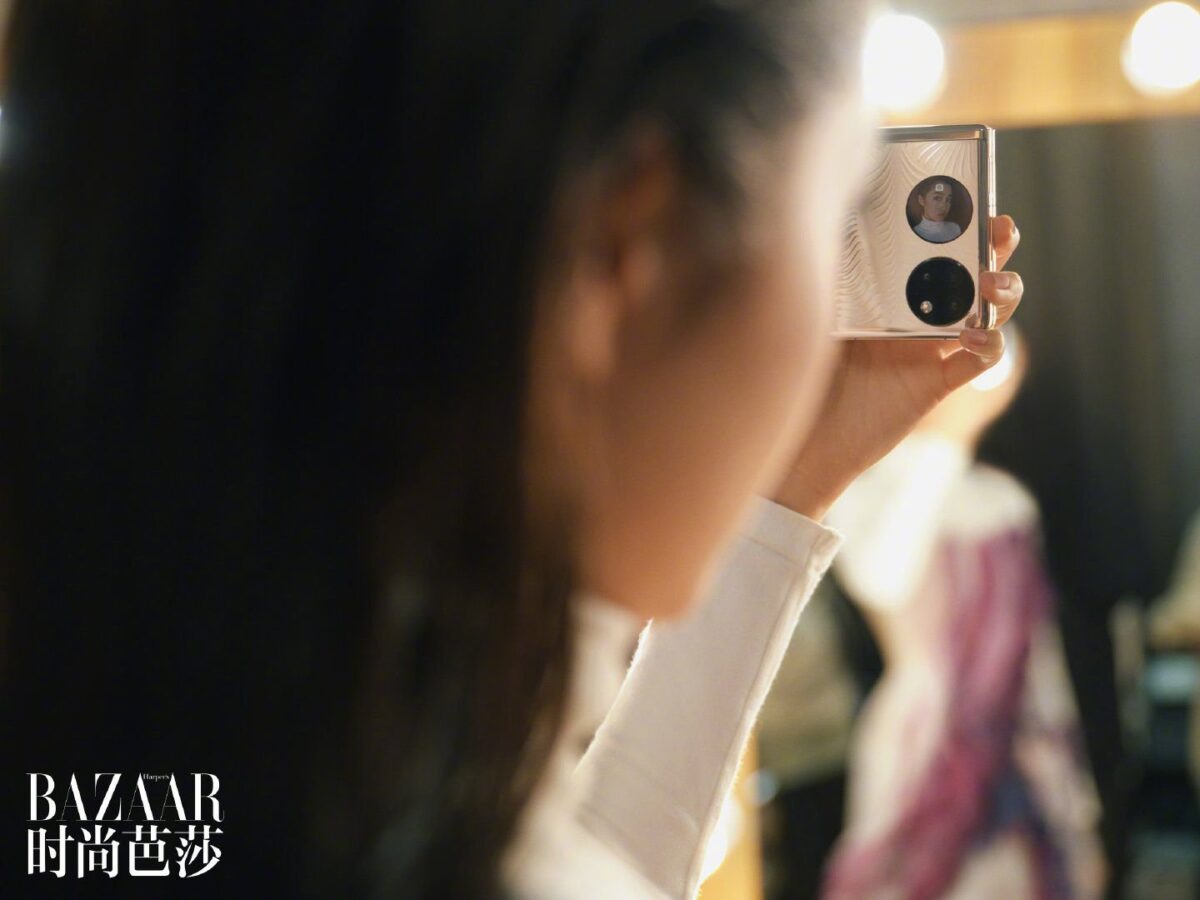
Remember that the pocket’s selfie camera isn’t the same as the P50 Pro’s; it’s lower-res and lacks autofocus. Selfies made using the internal ‘conditionally-front-facing’ camera on the P50 Pocket feature two zoom levels: native wide and cropped, similar to how Samsung has done. Still, the cropped ones are subsequently upscaled to the nominal 10.7MP.
If everything is in order, 10.7MP should suffice, but in our experience, this camera has several flaws. In bright light, we saw photos that appeared to demonstrate what we believe to be image stacking misalignment (1 and 6), while others had high noise and no HDR.
While this would ordinarily paint a bleak picture for your selfies, we’re willing to overlook these flaws on the pocket because the rear cameras and framing on the external display can produce stunning images. How well do your video calls need to be?
Selfies are taken with the rear camera:
Here’s how much better the output from the rear cameras can be. On the primary one, we’re talking great detail, pleasant hues, and plenty of HDR (a bit much, even, occasionally).
Making a video:
With all three of its cameras – the two rear ones and the internal one – the P50 pocket can take video up to 4K60. Stabilization is always on, and it will be there for you up to 4K60. You can enable h.265 encodings in the options menu; otherwise, the less efficient h.264 codec is utilized by default.
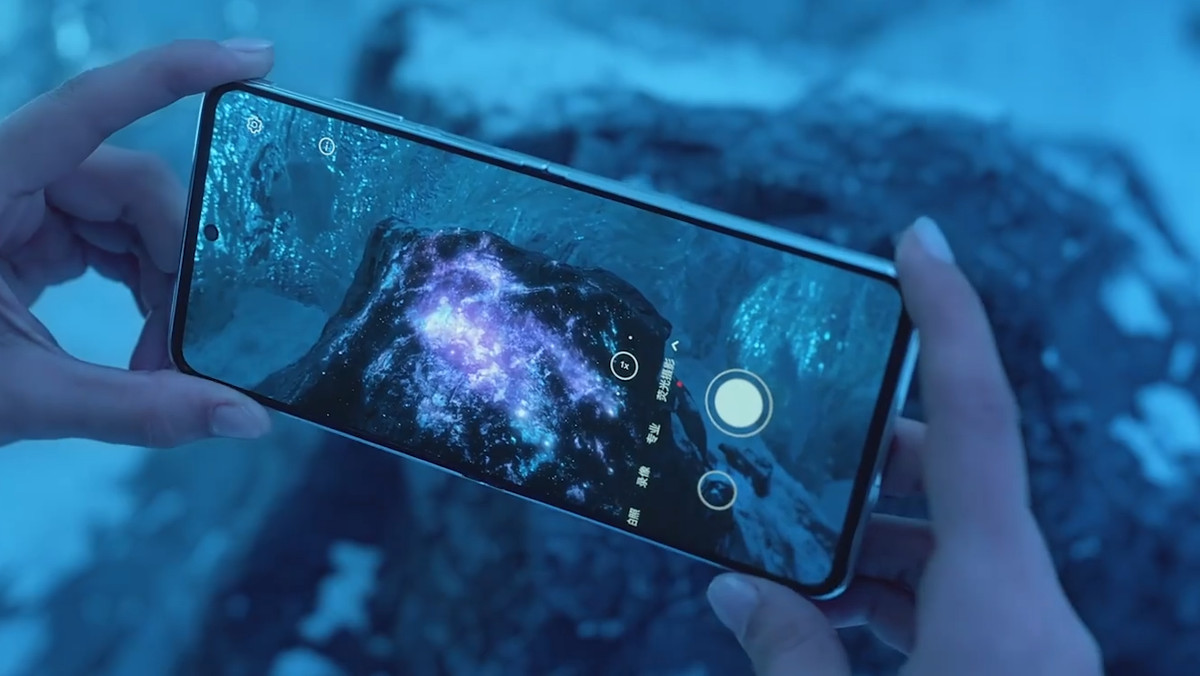
Overall, the primary camera’s 4K30 footage (40Mbps bit rate) is good, with a decent dynamic range and beautiful colour output. Detail is also good, albeit a combination of noise and over-sharpening results in an unappealing gritty appearance. It’s not bad, but it could be better. 4K60 achieves this without sacrificing quality, which is again.
Samsung Galaxy Z Flip3 vs Huawei P50 Pocket:
Users might be curious to see if the pocket’s significant price premium is reflected in its image quality. That is, not if its cameras alone would warrant an extra €400, but if the difference is in the right direction. We thought comparing the P50 pocket and the Galaxy Z Flip3 was necessary because the two phones have a design factor.
Daylight:
When comparing photographs from their main cameras in broad Daylight, the pocket produces noticeably more explicit images when compared to an unusually noisy Flip. Complete detail is comparable, demonstrating the pocket’s capacity to retrieve data from the more advanced sensor. We prefer Huawei’s blue sky representation over the Galaxy’s for a slight, purely academic edge in dynamic range.
Low-light conditions:
What a commotion! The primary camera on the Flip becomes much noisier at night, whilst the pocket retains its clean output throughout the day. Although the resolution is equivalent between the two cameras, the pocket’s images seem excellent due to the lower noise. Another benefit of the bag is that it has considerably more significant control over blooming when exposed to bright lights.
Competition:
When it comes to forming factors alone, the Huawei P50 Pocket has only one obvious competitor: the Samsung Galaxy Z Flip3 5G. On its own merits, the Flip has an IPX8 rating for added security, all of Google’s apps and services, a brighter display that can display HDR content from both sides, and louder speakers.
Review of the Huawei P50 Pocket:
On the other hand, the pocket is superior in several areas, most notably in the camera sector, where it appears to be the better choice. The UV light allows for fun photo experiments, but it also serves as a unique and *possibly* practical sunscreen test. Huawei’s charging is also much faster, and it includes the option of memory extension if you still want it. We’d also argue that it’s the more stylish and refined of the two devices.
On the other hand, the Galaxy can be purchased for as little as €900 from respectable dealers, and maybe even less, making the €1300 Pocket a challenging sell.
If you’re not sold on this form factor, the Galaxy Z Fold3 is another viable option. The Fold is a unique creature with its benefits, but it’s all about the screen. Fold3 has a large screen yet is small enough to fit in your pocket. However, it comes at a higher price than Huawei, with around the same €400 for the bag and the Flip.
Cost Comparison:
The iPhone 13 Pro Max costs Pocket money, so there’s no need to think about money while resolving a problem. It’s also as near to a Google-free experience as you can get. However, you can use Google Maps and YouTube on the Apple device but not on the P50 pocket. In a real-world endurance contest, the iPhone will undoubtedly outlast the Pocket 2 to 1 or even 3 to 1; all things considered, it will also be the better camera phone. However, everyone has an iPhone, and how many people do you know who have a Pocket in their pocket?
There’s also the P50 Pro. Aside from the telephoto, the pocket isn’t significantly worse than its stablemate in terms of image, nor is it markedly poorer durability. Someone could prefer it to the bag because of the telescopic camera, the IP certification, and the general perception that foldable are fragile (which they sort of are, though not quite to the extent people perceive them to be). At the same time, display and charging are a toss-up. At this pricing point, the €100 price difference seems insignificant, and we’d choose the pocket over the other in a heartbeat.
Verdict:
Can you imagine your life without Google Maps and Netflix on your phone? Pocket doesn’t have them. Do you game a lot? The SD888 is always hot, but it’s especially troublesome inside the bag. Do you avoid foldable because you’re afraid they’ll break if you just stare at them? The pocket’s lack of an IP rating isn’t going to help. You’re adamant on getting 5G (for whatever reason). No, not in your pocket.
There are numerous reasons why the pocket is a horrible concept, but there is also a list of benefits. Foldables are fascinating in theory since they can be practical (like Samsung’s) or gorgeous (like Apple’s) (like this one). And both current Samsungs appear to make compromises to suit a budget and avoid cannibalism of other models in the lineup – Huawei doesn’t appear to be concerned about either with the pocket.
The camera and design are the concessions we believe Samsung had to make for the Flip to happen. Those are the two areas where Huawei has excelled with the Flip – the pocket is the more attractive of the two and has the better camera phone. Perhaps those two points are enough for someone with a no-strings-attached attitude to choose this one – after all, the Huawei foldable’s 50 per cent greater price is simply a figure. The rest of us will have to work a little more complicated. Also, compare and contrast listings.
Pros:
- Foldables are always eye-catching, but this one appears to be considerably more so.
- It fits in tighter pockets than other foldable since it folds without a gap.
- The inner monitor is excellent, while the exterior display provides additional capabilities.
- Charging is relatively quick.
- The UV light gives excellent photo chances on its own, and the sunscreen test feature can be handy for the right consumer.
- When using the back cameras and external display, the primary camera is excellent, the ultrawide is decent, and the selfie-shooting potential is tremendous.
- Even without Google, EMUI 12 is pretty capable.
- Other Huawei devices work and communicate appropriately with it.
Cons:
- There’s no IP rating, and it doesn’t want to stay open at odd angles (if you care about that).
- The battery life is unimpressive in the grand scheme of things (if not bad for a foldable).
- Speakers aren’t loud enough.
- There are no Google services available.
- There aren’t many HDR-compatible apps if any at all.
- There will be no 5G.
- Under constant load, there is a bias to throttle hard.
- Portrait mode is unreliable, and the internal camera quality is mediocre.
